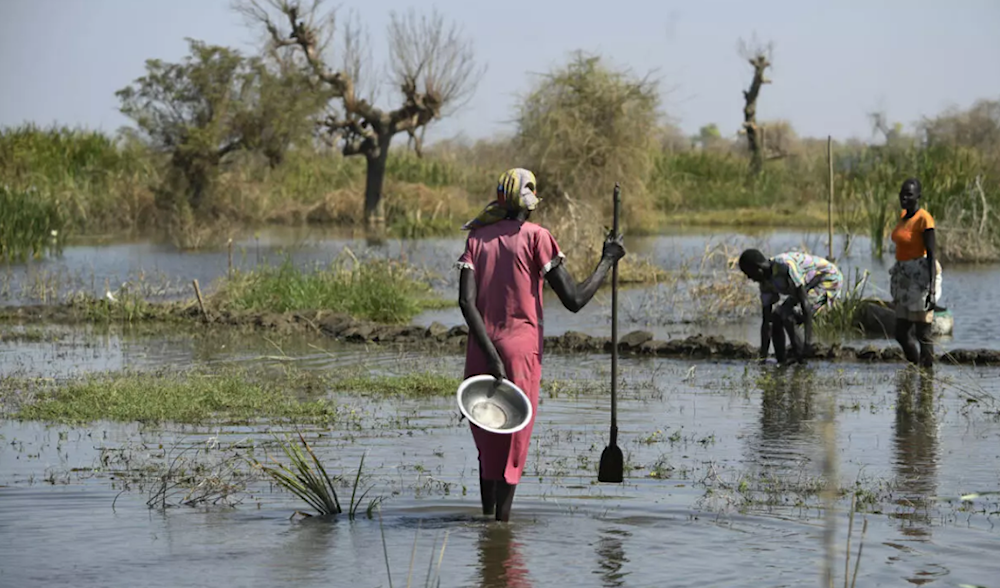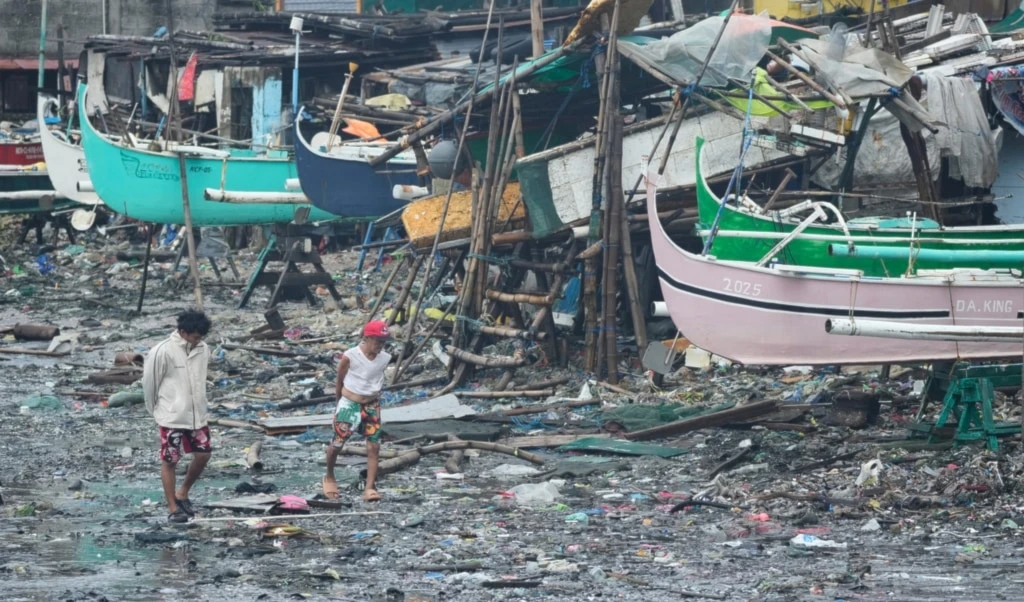South Sudan floods could impact over one million people
Heavy flooding in South Sudan has displaced thousands and destroyed homes, markets, and infrastructure. Officials warn of a worsening humanitarian crisis as communities face disease outbreaks and severe resource shortages.
-

South Sudan floods, undated (AFP)
Thousands of families across South Sudan are fighting to survive as relentless floods continue to devastate large parts of the country. The severe flooding has submerged homes, destroyed farms and markets, and damaged essential infrastructure, creating an escalating humanitarian crisis.
Communities in affected areas are struggling to access clean water, food, and shelter. Many are now exposed to disease outbreaks, particularly malaria, and face growing insecurity due to the shortage of basic resources.
In Pajut County, Jonglei State, one of the worst-hit areas, a resident of Kanal village told Anadolu Agency that his home and farmland were washed away in July. Since then, he and his family have been living in open areas, relying on sporadic humanitarian aid. “There is no medical facility or school in Pajut,” he said, describing the conditions as “tragic.”
Pajut County among most affected
According to Pajut County Commissioner Suleiman Deng Thon, nearly half of the area’s population has been displaced. “Floodwaters have risen to about 1.5 meters. Many people are now sheltering along the canal, while others have fled to Wuduwa and Zanki in Upper Nile State,” he said.
Thon urged both national and international relief organizations to provide emergency supplies, including sandbags and pumps, to help build flood defenses and drain water from residential areas. Residents from several villages, including Kanal, Atar, Alil, Korwai, Wan Lueth, and Khorfulus, have fled to higher ground in Pajut and Upper Nile State.
The UN Office for the Coordination of Humanitarian Affairs (OCHA) noted that access to clean water remains a serious concern. Emergency response teams have restored several hand pumps, providing clean water to an estimated 9,000 people.
Greater Pibor faces mass displacement
In the Greater Pibor Administrative Area, more than 113,000 people have been affected by the floods, with 43,000 displaced across six counties, according to David Ngiro Yangkon, Chair of the Relief and Rehabilitation Commission. He warned that the region’s health infrastructure is severely lacking, particularly in Lekuangole and Gumuruk, where no medical facilities exist.
A woman from the Greater Pibor Administrative Area also said the floods had destroyed her sole source of income. “Our situation is critical; many were affected, especially women. We work in the market, but the market is now flooded. The waters swept away my shop, and I lost my livelihood,” she said.
She called for urgent humanitarian assistance, particularly shelter, and noted that rebuilding without support would be extremely difficult.
Furthermore, Yangkon reported over 5,000 cases of malaria and waterborne illnesses. Heavy rains since June have caused the Pibor River to overflow, flooding vast areas of farmland and settlements, and destroying homes, markets, and key infrastructure.
While six counties in the region were affected, Boma Mountain County was spared due to its elevation. Yangkon appealed for immediate national and international assistance to prevent the situation from escalating into a full-scale humanitarian disaster.
Government pledges response, UN warns of long-term impact
South Sudan’s Minister of Humanitarian Affairs and Disaster Management, Albino Akol Atak Mayom, confirmed that the flooding is widespread. “An estimated 1.6 million people out of 12.7 million may be affected this year,” he stated.
He added that the government plans to allocate $170 million to flood response and climate resilience efforts, while urging international partners to mobilize resources to save lives and support communities.
According to OCHA, by October 24, more than 961,000 people had been impacted by flooding in 26 counties across six states, particularly in Jonglei and Unity. Nearly 335,000 individuals have been displaced to higher ground after their homes were inundated.
While flood levels are lower than the peaks of 2021, 2022, and 2024, OCHA warned they remain significantly above historical averages. Funding shortages and disrupted supply chains are delaying aid delivery and limiting the ability to respond quickly to urgent needs.
Read more: South Sudan shuts down schools as students collapse due to heatwave

 4 Min Read
4 Min Read










